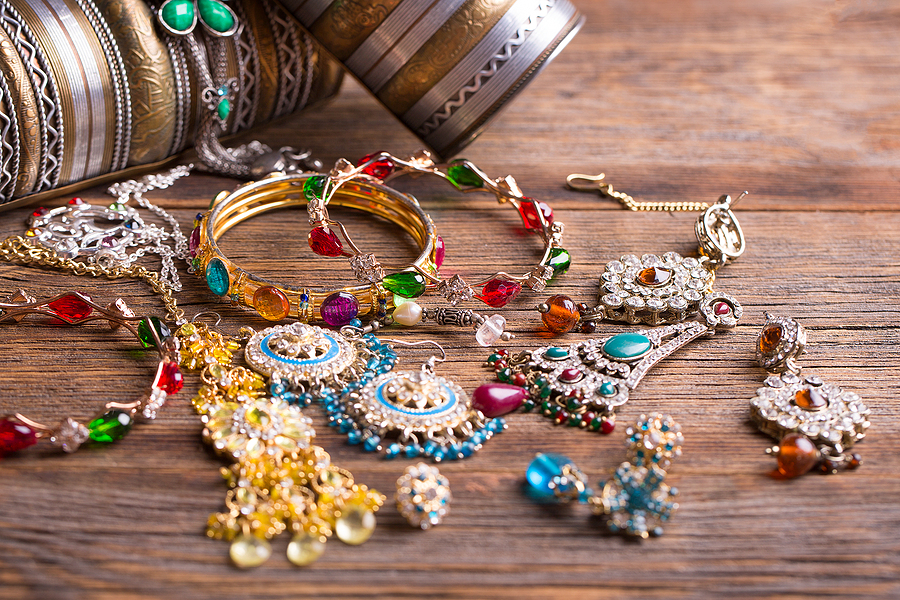Are you curious to know what sets handmade jewelry aside from the mass-produced? This piece sheds more light on the different categories of handmade jewelry and techniques for each category. The demand, production, and popularity of handmade jewelry have skyrocketed over the past few years. What’s handmade jewelry, and why is it so popular? There are numerous pieces of jewelry-making strategies being used today. You can get more info about handmade jewelry below.
Definition
Handmade jewelry, just as the name suggests, is made by a craftsman without using mass-manufacturing machines such as at St Martin Island jewelry shops. The handmade jewelry can range from the simple handcrafted bracelets and pendants to more complex designs that take much longer and skilled strategies to complete. What’s common in them is that the craftsman makes the jewelry using only simple tools and their hands.
Why go for handmade jewelry?
When you decide to buy an item of handmade jewelry, you’ll be getting a unique item every time. There’s often a little variation between the individual pieces of the same style due to the handmaking nature. Likewise, there could be tiny imperfections, such as the cut line isn’t entirely straight, but there’s more character to the handmade pieces. There’s always a story behind not only the design of the piece, but the artisan you’re buying from.
You’re also supporting small business owners to follow their passion when you buy their handmade jewelry. Some of these businesses are from stay-at-home moms working from the comfort of their home and selling them on online platforms. These small business owners buy from other small business owners. Hence, you’ll be supporting the entire small business community of the larger economy.
In most cases, the handmade jewelry craftsmen make their items from ethically-sourced and green materials. Handmade jewelry is perfect for nature lovers and is ethical and sustainable. Handmade jewelry artisans will choose source companies that have a reputation for recycling scrap metal or those that can provide a conflict-free background of their stones. Some artisans will even go to the mining sites to confirm the mining operations themselves. This guarantees that the origin of the gemstones and diamonds they will be purchasing comply with their own ethos.
Types of handmade jewelry
Assembled jewelry-making
Hand-assembled jewelry is the simplest type of handmade jewelry. This is the best way to give personalized and unique jewelry at an affordable price. It usually involves making earrings, bracelets, and necklaces from pre-made charms. It’s the easiest to learn these simple assembling techniques, and be a pro jewelry maker in a matter of days.
Wire-wrapped jewelry
This is easy to spot as it makes use of a lot of wire. Most artisans use the wire-wrapping method to come up with charms with beads and stones or pendants. The wire-wrapped jewelry is a decorative frame embellished with other ornaments attached with coils of wrapped wire. If you’re skilled and experienced, you can create more sophisticated and delicate designs with wire-weaving strategies that are labor and time-intensive. The artisans can use a few different gauges of wire depending on the designs. For instance, for simple framing techniques, they can select a thicker gauge wire, while the complex woven designs will need thinner gauges.
Fabricated jewelry
The handmade fabricated jewelry covers a wide array of styles, from the traditional gemstone rings to the sophisticated creative art jewelry. The fabricated jewelry employs the metalsmithing strategies and the jewelry bench prowess. Artisans use a metal saw to cut out the original shape of the item or complex details in the item. Fabrication, however, takes a lot of dedication and time to learn. It is, therefore, recommended that one takes studio classes at community art centers, vocational schools, or universities. Once you learn a few simple concepts, you’ll then progress to advanced skills where you can manipulate metal in several ways. With more knowledge and practice over the years, the collections become more complex and technically challenging, and this is where a lot of the resolute and grimy artisan’s hands result from.
Beaded Jewelry
Depending on the beads being used, the handmade beaded jewelry can have simple or complex jewelry designs. The artisans normally use beads on a single strand of stringing material to create necklaces and bracelets. Some of the beads have numbers or letters for personalization purposes. There are other designs of using fun-shaped beads to express interests or larger statements bead with smaller ones framing it. Jewelry makers can, however, make more complex and larger designs by practicing and using tiny beads.
Beads are available in an array of materials, from crystal, gemstone, copper, wooden, clay, rose gold-filled, sterling silver, and gold-filled beads. The glass beads are the most delicate and intricate handmade beads.
Hand-stamped/Engraved jewelry
This is one of the most popular types of handmade jewelry presently. Hand-stamping makes it possible for artisans to create personalized customer items for their clients. It requires simple techniques and tools, hence, an easy craft to start with. The designs are made by hammering a metal stamp impression onto a metal blank with a massive hammer. Most of the tools required for this process are easy to come across for both professionals and hobbyists.
Although handmade engraving jewelry brings out more details and designs, it requires specialized equipment or greater skills. Hand-engraving a piece requires more practice and time. There’s also the option of laser engraving, which comes at a higher price due to the high-quality tools. Through the use of software programs, artisans can develop and upload personalized designs that they will engrave using laser beams.
Enameled jewelry
The handmade enameled jewelry allows makers to add pops of color to their metal jewelry items. Enameling is primarily dichroic glass powder to the metal surfaces to create a permanent bond. There are various ways makers can add enamel to handmade jewelry. The most popular method today is torch-firing. This is regarded as a much simpler and affordable technique of enameling, as you’ll only be required to use the soldering torch to heat the enamel on the metal. Most of the enameling strategies will need a kiln that heats the jewelry more gently compared to the soldering torch. One of the most popular strategies in history is Cloisonné, which uses wire to make small compartments to create designs with the enamel. Another difficult technique is the plique-a-jour, which makes a stained glass-like effect because the enamel has no backing.
How to start making handmade jewelry
Now that you’ve read about the handmade jewelry types and techniques, how do you start making handmade jewelry? If you’re looking to advance your career, start a side hustle, or make handmade jewelry as a hobby, there are many ways you can learn. Thanks to the Internet and free online teaching platforms such as YouTube, you can find free tips on what you need to get started and how to perform basic techniques. Starting the handmade jewelry journey at home is ideal, but it’s advisable to go to a class or workshop because in-person training is much better. Here, you can ask direct questions and get feedback from the highly experienced and skilled jewelry instructor. This is the best way to learn, but you can always explore other favorable alternatives that best suit your needs.
Practice makes perfect.
If you go for the wire jewelry method, you should practice and master a jewelry-making strategy before you start bending and cutting expensive wire. Through repetition, you’ll get the hang of the method, so that the final item will be clean and of high quality. Despite the material you go for, always practice the method first before using your actual and expensive materials. For instance, a thin copper wire is an ideal option for practice wire.
Buying jewelry supplies
Now that you’ve undergone the jewelry-making classes, you’re confident that you can go out and shop for your materials. You’re ready to start working on your own and explore the jewelry-making business. It can, however, be overwhelming for beginners to figure out what they need. There are extra classes aimed at teaching people how to plan, budget, and create designs. It’s a hard lesson to teach as people spend a lot on buying unnecessary supplies.
Always sketch your design ideas and look for online catalogs guiding you on the components available for the design. Note down the product numbers to make the purchase process easy. Once you have the sketch, make a list of the quantity of each part you’ll need for the complete project. Be as specific as possible, so that you can change or replicate the design in case you decide to make more in the future. The next steps are to plan for the production process and compare shops. Once you have the shop figured out, you need to check your budget and track your costs of the parts to price your work accurately in the future. However, keep in mind that price fluctuates, so don’t be shocked.
Image Source: BigStock.com (licensed)
Related Categories: Fashion & Gear, Reviews








